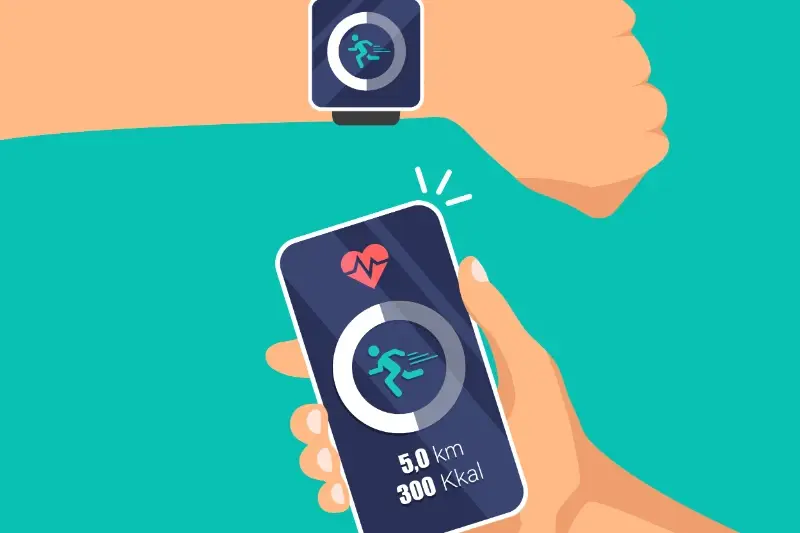Going Global: The Complete Guide to App Localisation
Mobile apps generate over 95% of their revenue from just 5% of the world's countries. That's a staggering figure that should make any app developer sit up and take notice. If you're only targeting English-speaking markets, you're missing out on billions of potential users and massive revenue opportunities.
I've worked with countless app developers over the years, and I can tell you that most of them build brilliant apps that never see success outside their home market. It's not because their apps aren't good enough—it's because they haven't considered how their app will work for someone in Japan, Brazil, or Germany. The mobile app market is truly international now, and users expect apps to feel native to their culture and language.
The biggest mistake I see is developers thinking they can just translate their app into different languages and call it global expansion
App localisation isn't just about swapping English text for French or Spanish. It's about understanding different cultures, adapting your design for various writing systems, and making sure your app feels like it was built specifically for each market you enter. When done properly, localisation can transform your app from a regional player into a global success story.
What Is App Localisation and Why Does It Matter
App localisation is the process of adapting your mobile app for different countries, languages, and cultures. It's not just about translating text—though that's a big part of it. You're also tweaking everything from colours and images to payment methods and legal requirements to make your app feel native to each market.
Think of it this way: when someone downloads your app in Japan, they should feel like it was built specifically for them, not like they're using a poorly translated version of something made for British users. That means Japanese text, yen pricing, local payment options, and design choices that make sense to Japanese users.
Why Bother With Localisation?
The numbers don't lie—apps that are properly localised see significantly higher download rates, better user engagement, and more revenue in international markets. But beyond the business case, it's about respect for your users. When you localise properly, you're showing that you value different cultures and want to provide the best possible experience for everyone.
What Gets Localised?
Here's what typically needs attention during the localisation process:
- All text and copy within the app
- Images and graphics that contain text or cultural references
- App store listings and screenshots
- Currency, date, and time formats
- Payment methods and pricing strategies
- Legal compliance and privacy policies
- Customer support channels
Understanding Your Target Markets Before You Start
Before you even think about translating a single word or changing a colour scheme, you need to understand who you're actually building for. I've worked with countless clients who want to launch their mobile app internationally but haven't done their homework on their target markets—and trust me, it shows in the results.
Market research isn't just about finding countries with lots of smartphone users. You need to dig deeper into how people actually use apps in different regions. Some markets love social features whilst others prefer privacy-focused apps. Payment methods vary wildly too—credit cards might be standard in one country but mobile wallets dominate in another.
Start with just 2-3 target markets for your first international expansion. It's better to do a brilliant job in fewer places than a mediocre job everywhere.
Key Market Research Areas
- Local competition and app store rankings
- Popular payment methods and pricing expectations
- Cultural preferences for app design and functionality
- Device preferences (iOS vs Android market share)
- Internet connectivity and data usage patterns
- Legal requirements and app store regulations
Don't assume what works in your home market will work elsewhere. Global expansion means adapting to local needs, not forcing your existing approach onto new audiences. The apps that succeed internationally are the ones that feel native to each market they enter, and proper competitive analysis will help you understand what local users expect.
The Technical Side of Localisation That Developers Need to Know
From a developer's perspective, localisation isn't just about swapping out text files—though I wish it were that simple! The technical groundwork you lay down early will determine whether your app scales smoothly across different markets or becomes a maintenance nightmare.
String externalisation is your first priority. Never hardcode text directly into your app's code; instead, store all user-facing text in separate resource files. This means creating strings.xml files for Android or .strings files for iOS that can be easily translated without touching your codebase. Trust me, your future self will thank you for this discipline.
Character Encoding and Text Expansion
Different languages take up different amounts of space—German words can be 35% longer than their English equivalents, whilst Chinese characters might be more compact but require larger font sizes for readability. Your UI layouts need to handle this gracefully using flexible containers and responsive design principles.
Right-to-Left Language Support
Supporting Arabic, Hebrew, and other right-to-left languages requires more than just text alignment changes. Your entire interface needs to mirror—navigation patterns, button placement, and even gesture interactions flip horizontally. Most modern frameworks provide RTL support, but you'll need to test thoroughly to catch edge cases where elements don't behave as expected.
Content Translation Goes Beyond Just Words
When most people think about translating their mobile app for global expansion, they focus on getting the text right. Fair enough—nobody wants their app saying something embarrassing in another language! But here's what I've learned from working on international mobile app projects: the words are just the beginning.
Your app's content includes everything from error messages to push notifications, from onboarding flows to help documentation. Each piece needs to make sense in the local context, not just be grammatically correct. Take dates, for example—writing 12/01/2024 means January 12th in America but December 1st in Britain. Currency symbols, phone number formats, and address structures all vary wildly between countries.
Cultural Context Matters More Than Grammar
I've seen apps fail not because of poor translation, but because they missed cultural nuances. Colours mean different things; humour doesn't always translate; even the way people expect to interact with buttons and menus can differ.
The best localised apps feel like they were originally created for that specific market, not translated from somewhere else
Your content strategy needs to account for local holidays, cultural references, and social norms. Sometimes this means completely rewriting sections rather than translating them word-for-word. It's more work upfront, but it's what separates successful international apps from ones that feel foreign and awkward to local users.
Design Considerations for Different Cultures and Languages
When I'm working with clients on app localisation, this is where things get really interesting—and where I see the most mistakes being made. You can translate every word perfectly, but if your design doesn't work for the local culture, your app will still feel foreign.
Text expansion is probably the biggest design challenge you'll face. German words are famously long (their word for "speed limit" is "Geschwindigkeitsbegrenzung"), whilst Chinese characters can say the same thing in half the space. I've seen buttons that look perfect in English completely break when translated to German because there's simply no room for the extra characters.
Cultural Design Differences
Colours mean different things around the world. Red means luck in China but danger in Western countries. White represents purity in some cultures and mourning in others. The thumbs-up emoji? It's actually offensive in parts of the Middle East.
Reading direction matters too—Arabic and Hebrew users read right-to-left, which means your entire interface needs to flip. Navigation arrows, progress bars, even the way people expect to swipe through content changes completely.
Local Preferences
Some cultures prefer detailed information whilst others want simple, clean interfaces. Payment methods vary massively—WeChat Pay dominates in China, but it's unknown in Europe. Even something as basic as how people enter their names differs; some cultures put family names first, others have multiple middle names.
The key is researching your target market properly before you start designing, not trying to retrofit your existing design afterwards. Understanding which design trends work across cultures can help you make informed decisions about your global interface.
Testing Your Localised App the Right Way
Testing a localised mobile app isn't just about checking if the translation looks right—though that's definitely part of it! I've seen too many apps launch internationally only to discover their beautiful design completely breaks when German text (which is notoriously long) gets squeezed into buttons designed for English. The text either gets cut off or pushes everything else around the screen.
You need to test your app with real users from each target market. Not your mate Dave who studied Spanish at university, but actual native speakers who live in the countries you're targeting. They'll spot cultural mistakes and awkward phrasing that automated testing simply can't catch.
What to Test Beyond Translation
Your testing should cover more than just language. Check that currencies display correctly, dates appear in the right format, and phone numbers follow local conventions. Test your app's performance on devices that are popular in each market—what works perfectly on an iPhone might struggle on budget Android phones common in emerging markets.
Create a testing checklist that includes currency formatting, date displays, text expansion, cultural imagery, and local payment methods for each market.
- Text expansion and UI layout with longer translations
- Right-to-left reading languages like Arabic
- Currency and number formatting
- Local payment gateway integration
- Cultural appropriateness of images and colours
- Performance on locally popular devices
Beta testing in each target market before your full launch will save you from embarrassing mistakes and negative reviews that could harm your global expansion efforts. Avoiding common user testing mistakes becomes even more critical when you're dealing with different cultures and languages.
Legal and Regulatory Considerations
One aspect of app localisation that often gets overlooked until it's too late is the legal side. Each country has its own regulations around data privacy, user consent, and app store requirements. Understanding privacy and legal requirements before you launch can save you from costly compliance issues down the line.
GDPR in Europe, CCPA in California, and similar regulations worldwide all have different requirements for how you handle user data. Your terms of service, privacy policy, and data collection practices might need significant changes for different markets.
Managing Payment Methods and Currencies
Nothing kills an international app launch faster than users who can't actually pay for your product or service. Handling different currencies and payment methods requires careful planning and integration with local payment providers.
In some markets, mobile wallets dominate whilst others prefer bank transfers or even cash-based payment systems. Your pricing strategy also needs to account for local purchasing power and competitive landscapes.
Building Your International Team
Successful app localisation often requires expertise you might not have in-house. Whether you're working with translation agencies, local marketing experts, or international development teams, what makes stellar apps applies even more when you're going global.
Consider whether you need local customer support, regional partnerships, or even local hosting to ensure your app performs well in different markets. The technical infrastructure that works perfectly in one country might be slow or unreliable in another.
Marketing Your Localised App
Once your app is localised, you need to tell people about it. Creating content to promote your mobile app in different markets requires understanding local social media platforms, influencer networks, and marketing channels.
What works on Instagram in the US might not work on WeChat in China or WhatsApp in Brazil. Your marketing messages, imagery, and even your app store optimisation strategy need to be adapted for each market.
Technical Considerations for Cross-Platform Apps
If you're building a cross-platform app, localisation adds another layer of complexity. Cross-platform app functionality needs to work consistently across different markets, languages, and devices while maintaining the native feel that users expect.
Some features might work differently on iOS versus Android in certain markets, and you'll need to test thoroughly to ensure your localised app performs well on both platforms across all your target countries.
Conclusion
App localisation isn't just a nice-to-have feature anymore—it's become a necessity for any mobile app that wants to succeed globally. After working with countless clients over the years, I can tell you that the apps that take localisation seriously are the ones that see real success in international markets.
The process might seem overwhelming at first; there's market research to conduct, technical considerations to implement, content to translate, designs to adapt, and thorough testing to complete. But here's what I've learned—you don't have to do everything at once. Start with one or two key markets that make the most sense for your app. Get those right, learn from the experience, then expand from there.
What separates successful global apps from the rest isn't just good translation—it's the attention to cultural nuances, the technical preparation for different languages, and the willingness to adapt designs that might work perfectly in your home market but fall flat elsewhere. Every market has its own expectations, and respecting those differences is what turns a localised app into a truly global product.
The investment you make in proper localisation will pay dividends in user engagement, retention, and ultimately revenue. Your global users will notice the difference, and they'll reward you with their loyalty.
Share this
Subscribe To Our Blog
You May Also Like
These Related Stories

The Complete Guide to IoT Integration in Mobile Apps

The Hidden Costs Of Mobile App Ownership Maintenance And Updates





